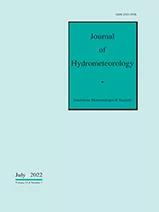An Evaluation of Evapotranspiration Products over the Tibetan Plateau
2024-11-01 null null 25(卷), null(期), (null页)
In situ observations from 13 sites located over the Tibetan Plateau (TP) are used to evaluate evapotranspiration (ET) products, including remote sensing-based, land surface-modeled, and reanalysis products. It is found that the Global Land Surface Satellite (GLASS) product, the Global Land Evaporation Amsterdam Model (GLEAM) product, and the simulations by the Community Land Model-dynamic global vegetation model [biogeochemical dynamic vegetation (CLM-BGCDV)] are the top-ranked products measured by the percentage bias, root-mean-square error, and correlation coefficient against in situ observations. The evaluated data are then used to examine the consistency in spatial and temporal variability of summer ET and its controlling factors on the TP and the three-river source region (TRSR). All products show consistently that precipitation in the central semiarid part of TP is the dominant factor influencing summer ET, while air temperature plays a certain role in the southeastern and eastern TP. Uncertainties exist in the western TP, possibly due to the lack of observations or gaps in the satellite data. Some suggestions for improving ET product development based on models and satellite retrievals, particularly for the cold and complex surface of the TP, are also given.
相关推荐
- Spatiotemporal changes of desertification areas in the Alxa Desert obtained from satellite imagery [2024-11-01]
- Effects of forest age and stand density on the growth, soil moisture content, and soil carbon content of Populus simoni plantations in the sandy area of western Liaoning, Northeast China [2024-11-01]
- Unraveling the non-linear relationship between seasonal deformation and permafrost active layer thickness [2024-11-01]
- Using SAR imagery to extract flash flood sediment deposition area in the northern Loess Plateau [2024-11-01]
- Changes in preferential flow caused by root effects in black locust plantations of different stand ages in the semi-arid region of the Loess Plateau [2024-11-01]



